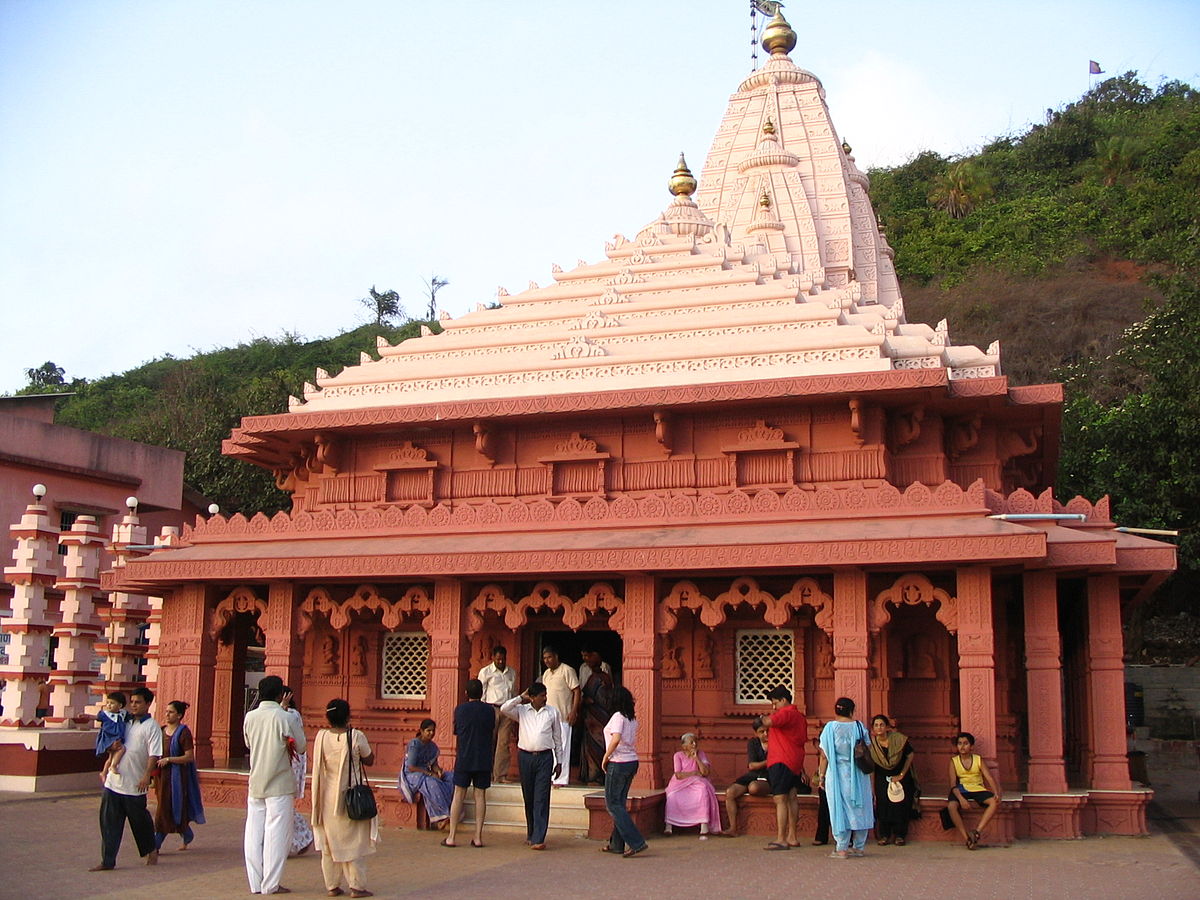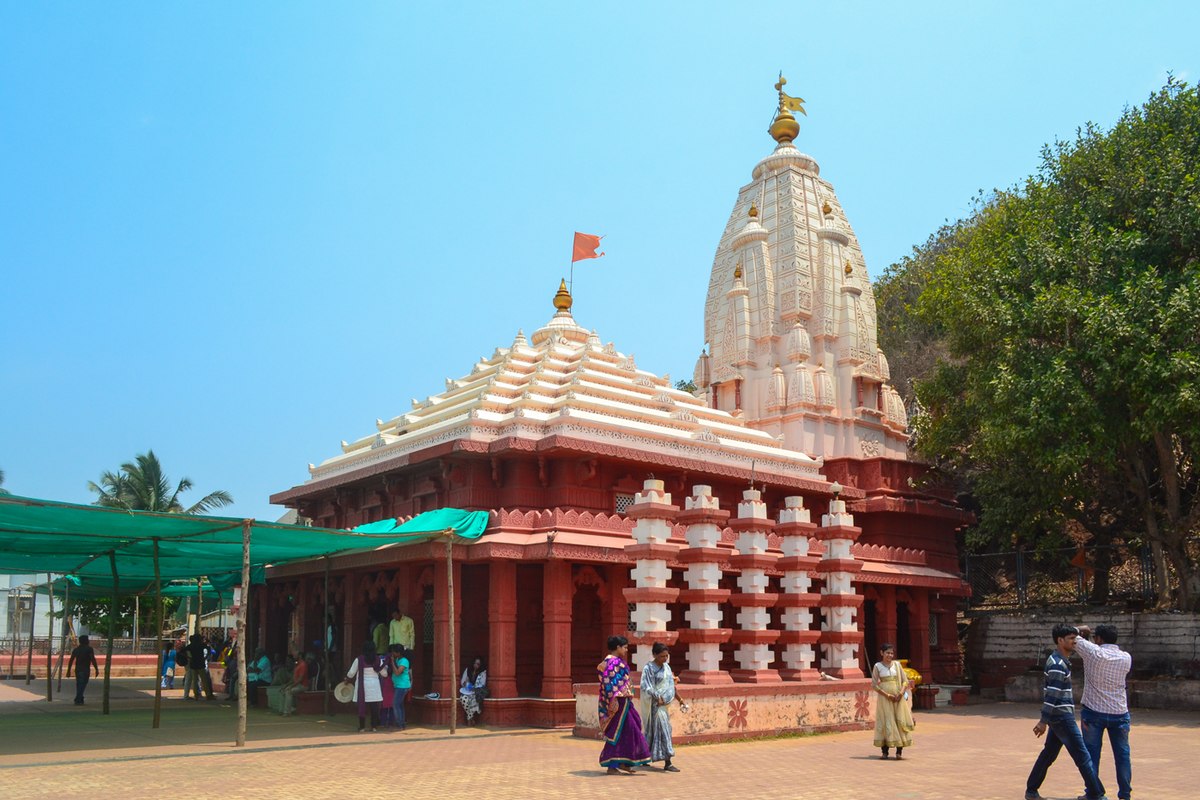Ganpatipule Temple
The Ganesh Temple at Ganpatipule, nestled along the pristine Konkan coast, is renowned for its self-incarnated (Swayambhu) Ganesh idol. With its spiritual significance and breathtaking location by the Arabian Sea, the temple attracts devotees and tourists alike for a peaceful and divine experience.

Ganpatipule Ganesh Temple: Where Spirituality Meets Scenic Beauty
| Deity: | Lord Ganesh |
| Location: | Konkan Coast, Maharashtra |
| Best time to visit | October-February |
| Open Hours | 5:00 AM–9:00 PM |
| Popular festival | Ganesh Chaturthi |
FAQ
Where is Ganpatipule Temple located?
Konkan Coast, Maharashtra
What is the origin or historical significance of the Ganpatipule Temple?
The Ganesh Temple at Ganpatipule, located in Ratnagiri district of Konkan, Maharashtra, has ancient roots dating back to the Peshwa period. The temple is referenced in ancient literature such as the Mudgal Purana, which identifies it as one of the “Ashta Dwar Devatas” (Eight Welcoming Deities) of India, also known as the “Western Sentinel God.” According to local legend, a Brahmin named Bal Bhatji Bhide had a vision of Lord Ganesh, which led to the discovery of the self-incarnated (Swayambhu) Ganesh idol in the 17th century. This temple has since been a key pilgrimage site for devotees.
Who built or upgraded the Ganpatipule Temple?
The temple was originally discovered by Bal Bhatji Bhide, who performed the first worship after uncovering the idol in the 1600s. Over the centuries, various upgrades have taken place. Annaji Datto, a minister in Shivaji Maharaj’s court, built the original dome, while Sardar Govindrap Bundele from the Peshwa court added the auditorium.
Later, Vasudeorao Barve of Kolhapur established a gold-plated dome, and Nanasaheb Peshwa arranged for the temple’s continuous lamp (Nandadeep). The modern temple structure, constructed between 1998-2003, was based on ancient Indian architectural styles and used Agra Red stone to maintain a traditional feel.
What are the cultural or mythological references associated with the temple?
According to mythology, Lord Ganesh appeared to Bal Bhatji Bhide in a vision and instructed him to worship at the site where the temple now stands. The temple’s Swayambhu Ganesh idol, meaning self-manifested, holds immense significance as it represents a naturally formed deity. The temple is also recognized as one of the eight revered Ganpatis in India and is deeply connected with the religious and cultural fabric of the Konkan region.
What are the unique points about the Ganpatipule Temple?
One of the temple’s unique aspects is the Swayambhu Ganesh idol, which was not sculpted but self-formed from a rock. The temple is set against the backdrop of the Arabian Sea, offering breathtaking views and a serene environment. Visitors can also perform a circumambulation (parikrama) around the temple’s hill, which is believed to be equivalent to circumambulating the deity itself. The natural beauty of the area, with its pristine beaches and lush greenery, adds to the spiritual experience.
Why is the Ganpatipule Temple famous?
The temple is famous for its Swayambhu Ganesh idol and its scenic location along the Arabian Sea. It is one of the Ashta Ganapatis (eight Ganesh temples) in India, making it a prominent pilgrimage site. Additionally, the unique combination of spiritual significance and natural beauty draws both devotees and tourists throughout the year. The sunset views from the temple’s grounds are particularly renowned.
What is unique about the temple’s architecture?
The Ganesh Temple at Ganpatipule is constructed in traditional Indian architectural style, using Agra Red stone to give the appearance of a temple carved from a single rock. The temple features a high dome-shaped altar, carved ceilings, and a grand entrance with two large bronze elephants flanking the main gate. A bronze mouse, the vehicle (vahana) of Lord Ganesh, faces the entrance. The temple complex is surrounded by towering lamp posts, and the idol itself is situated at sea level, touched by sunlight during certain months and by sea waves during high tide.
When is the best time to visit the Ganpatipule Temple?
The temple can be visited throughout the year, but the best time to visit is during the winter months from October to February, when the weather is pleasant and ideal for exploring the coastal region. The Ganesh Chaturthi festival, celebrated with great enthusiasm, is another excellent time to experience the temple’s vibrant atmosphere. Additionally, the monsoon season offers a unique experience, as the rains bring out the region’s natural beauty.
How can one reach the Ganpatipule Temple?
The Ganesh Temple at Ganpatipule is located approximately 350 km from Mumbai. The nearest airport is in Ratnagiri, about 50 km away. By rail, the closest station is Ratnagiri, well-connected to major cities. The temple is easily accessible by road, with regular bus and taxi services from Mumbai, Pune, and other nearby cities.
In conclusion, the Ganesh Temple at Ganpatipule is not just a spiritual landmark but a testament to India’s rich cultural and religious heritage. With its self-manifested deity and serene location along the Konkan coast, the temple offers a unique blend of devotion and natural beauty. Whether visiting for blessings or to enjoy the scenic surroundings, a trip to this revered temple is a spiritually enriching and memorable experience for all who visit.







